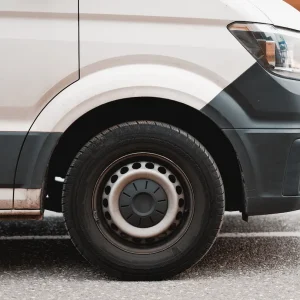“I think we'll end up with a wide choice of power sources, and that includes petrol,” he says. “Hybrids will have a big part to play, diesel still has a lot more potential and I reckon that small, highly efficient diesels capable of 100mpg will become commonplace.”
Will they run on biodiesel, now coming under fire as being environmentally unfriendly and responsible for driving up world food prices?
“I don't think biodiesel is finished, but I do think it may turn out to be a blind alley,” says Stephen Kimber, UK director, commercial vehicles, at Ford.
“I think biodiesel has got a short shelf life,” says Grahame Neagus, head of Lloyds TSB Autolease's specialist commercial vehicle unit; it's recently developed an emissions calculator for light commercials. “I suspect that we'll ultimately end up with a mixture of hybrids and full-on electrics.”
Robin Woolcock, UK managing director at Volkswagen Group, isn't so sure. “While there's a place for electric vehicles, I don't see plug-in vans as the complete answer,” he says.
He's convinced that biodiesel still has a role to play, despite the barbs that have been aimed at it in recent months. “We've got a biodiesel plant coming on stream in Germany that we're constructing in co-operation with Daimler and Shell,” he says.
“While the criticisms may be true if you're talking about first generation biodiesel, they're not accurate so far as second or third generation is concerned,” he continues. That's because they're more likely to be made out of various types of waste than plants grown in place of food crops or on cleared land once occupied by rain forest. He agrees with Parfitt that diesel engines are still capable of a lot more development.
Parfitt reckons that the technology used in Chevrolet's Volt project, due to be completed in the USA in 2010 by the GM subsidiary, has a lot of potential on this side of the Atlantic too. Volt is powered by lithium ion batteries that can be charged up from the mains, but is additionally fitted with a highly efficient turbodiesel engine that can also charge the batteries in order to extend the range if necessary.
How about producing vans in volume powered by fuel cells? “That's still some way away,” he replies. “As for hydrogen, there's no infrastructure in place.”
Parfitt clearly feels that vehicle manufacturers are being asked to shoulder too much of the environmental burden and that they've failed to put their case to government effectively enough.
“Frankly we're hopeless at it,” he states. “Other industries are far better at lobbying government than we are. The motor industry is not the dirty man of Europe but we're failing to get that message across. We're a soft touch, and as a consequence we probably deserve what we get.”

 Faced with crippling fuel costs, van owners on short-haul work may be wondering if electric light commercials could be the answer given the number on display at the recent British Commercial Vehicle Show. Vauxhall managing director, Bill Parfitt, believes they represent part, but by no means the whole, of the solution.
Faced with crippling fuel costs, van owners on short-haul work may be wondering if electric light commercials could be the answer given the number on display at the recent British Commercial Vehicle Show. Vauxhall managing director, Bill Parfitt, believes they represent part, but by no means the whole, of the solution.



